
Machine design
Task: | Develop a machine

During this week the team and i developed the xy-core; my task was to progress with a tool which could hack onto the xy-core and eventually develop the modular mechanical system further. I was a week late into the group work due to the change in time calender at the time; but i made an extra effort to understand what the others were doing so that i could eventualy catch up and be the end-effector of the group.
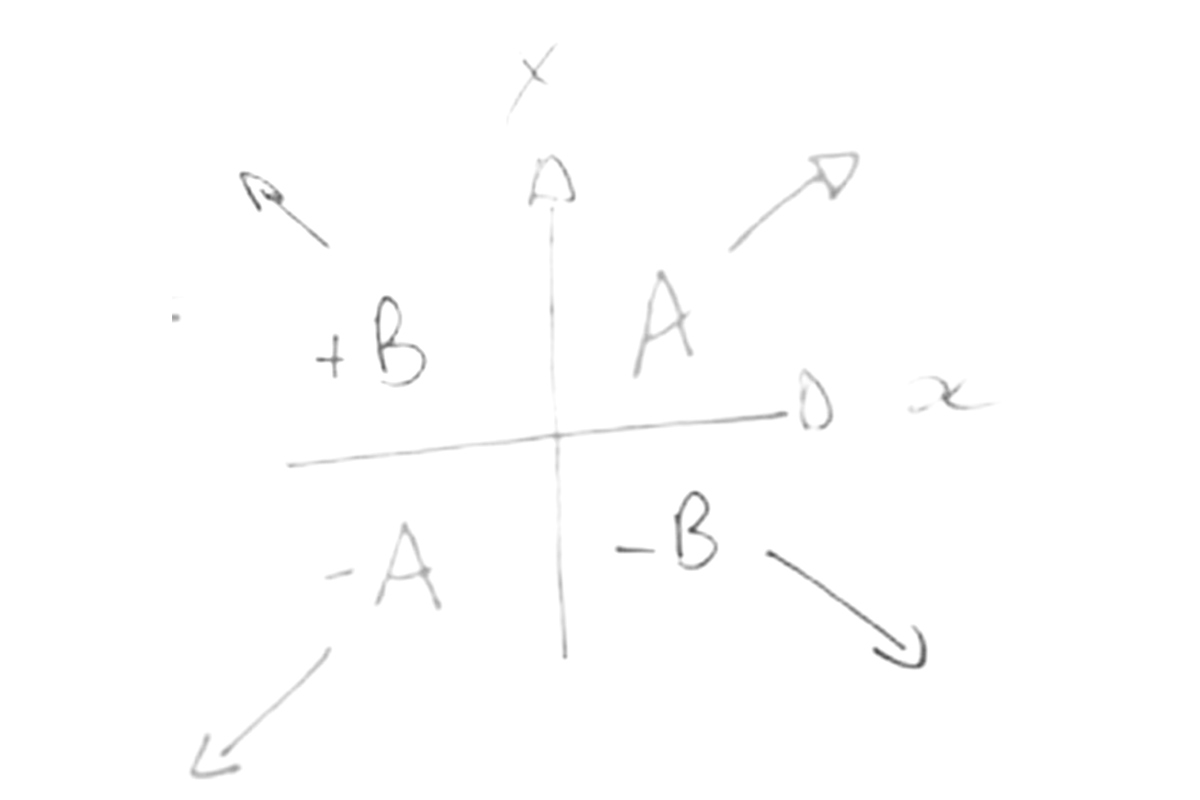
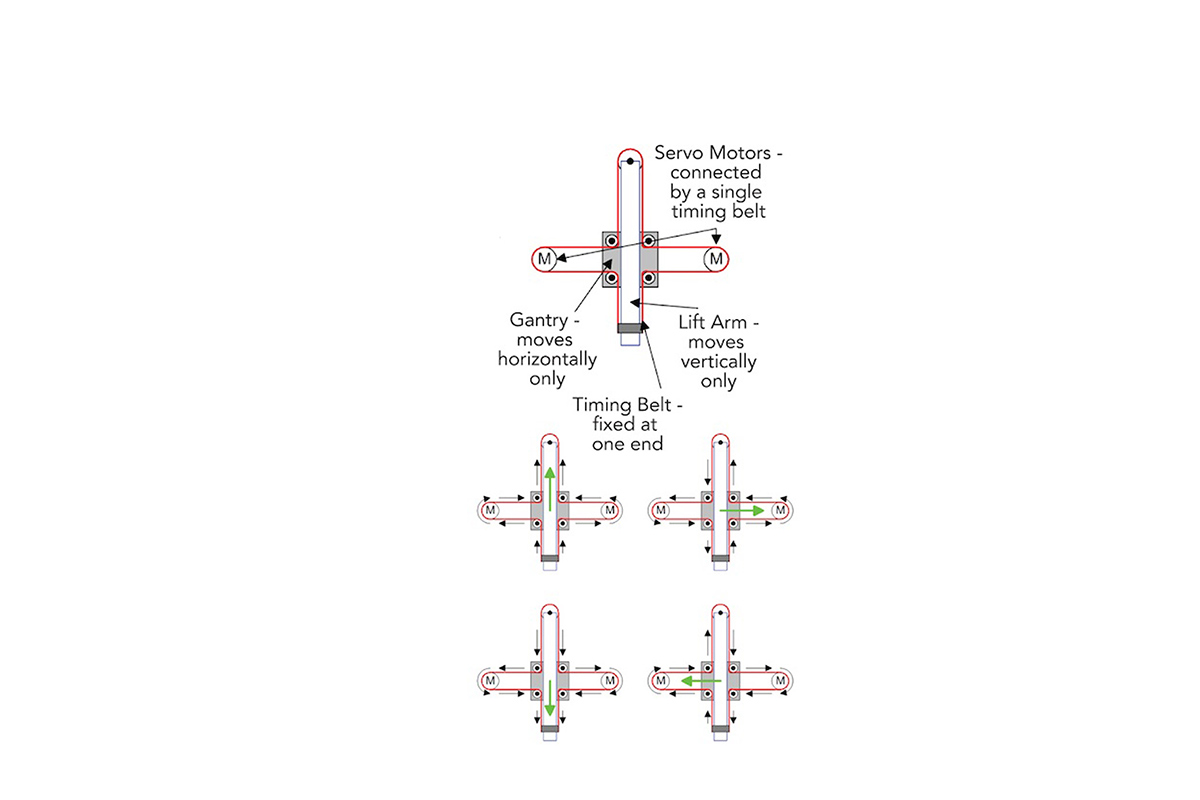 Reference
EQUATIONS OF MOTION A,B: MOTORS
Reference
EQUATIONS OF MOTION A,B: MOTORS
incX = 1/2(-incA-incB) neg_incX=1/2(incA+incB)
incY=1/2(incA-incB) negincY=1/2(-incA+incB)
diaA =incX+incY
neg_diaA= -incX -incY
diaB=-incX+incY
neg_diaB=incX-inxY
Once the others had developed their mechanics I was in time to understand equations of motion and programming with Gestalt nodes (although i developed the final with Marlin Firmware).
|Programming with Gestalt
1. Download Python 2.x for gestalt.
2. Download Python IDE or Python interpreter (IDE options)
Although one can use their terminal as an interface ... we suggest Pycharm as it is easier to understand and learn.
3.Getting started (helpful tutorials for beginners)
Gestalt is a control system framework for personal fabrication - look at this links to understand the framework 01 and 02
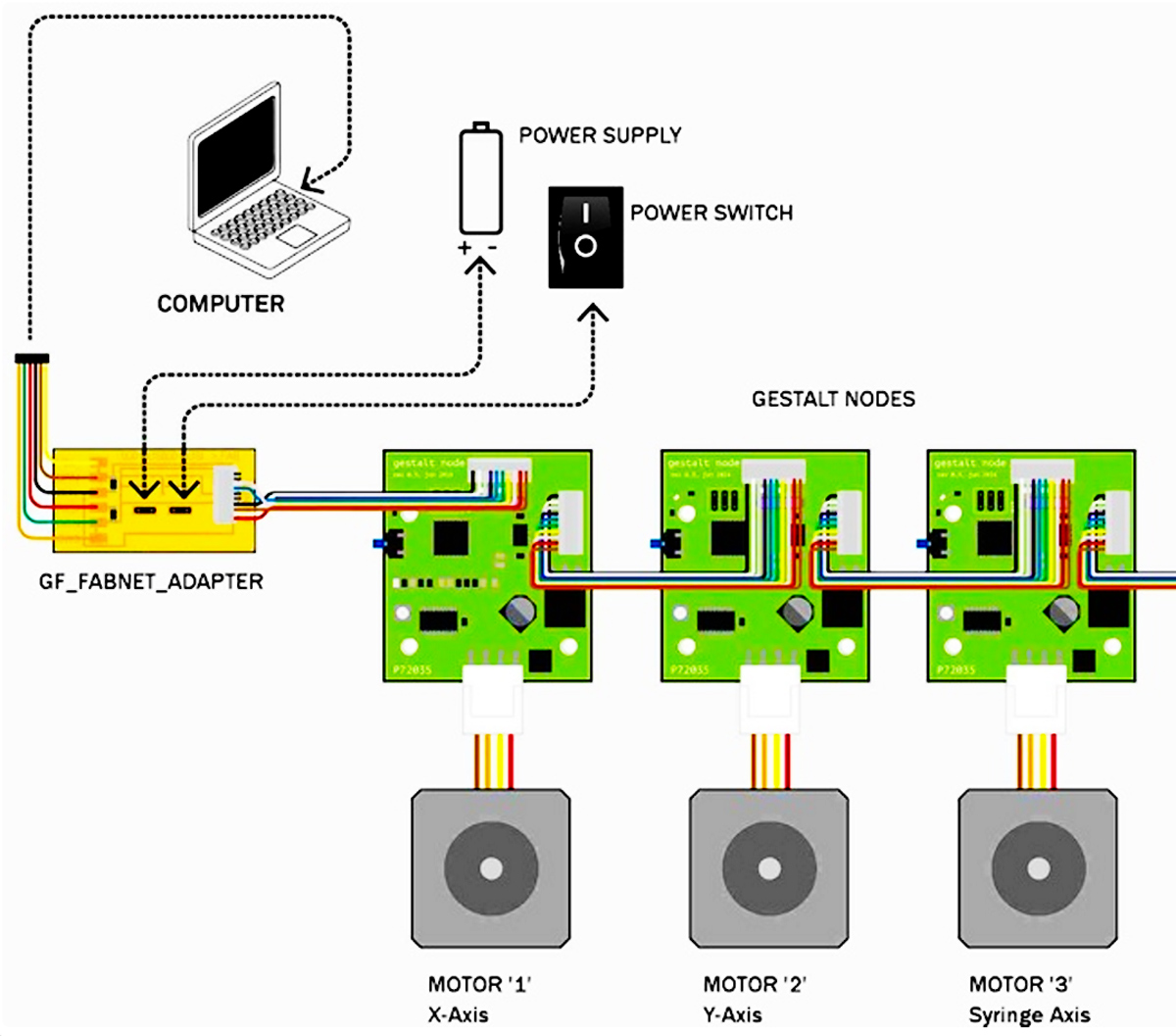 |Step by step for Geshtalt.
|Step by step for Geshtalt.
a. follow the set-up guide
b. Download pyGestalt Framework and install it.
--> in the directory where setup.py is:
sudo python ./setup.py install
c.Programming the Gestalt Node with and AVR
d.Download and Install pyserial -> in order to talk over serial
-pySerial is a module to communicate python with the serial port ( Python Serial Port Extension ).This is the installation guide
sudo python ./setup.py install
|Installing Pyserial and pyGestalt from the terminal on Mac.
a. Download and extract pyserial.
b.Navigate via Terminal to the folder you have pyserial extracted, in this folder you should have a file called setup.py
c. Run this script
sudo python setup.py install
A similar process should be done for the pyGestalt
a. Download the Nadia Peek pyGestalt framework.
b.Navigate in the command line where your pyGestalt folder is located.
c.Run the command: sudo python setup.py install.
Generate G-code tutorial
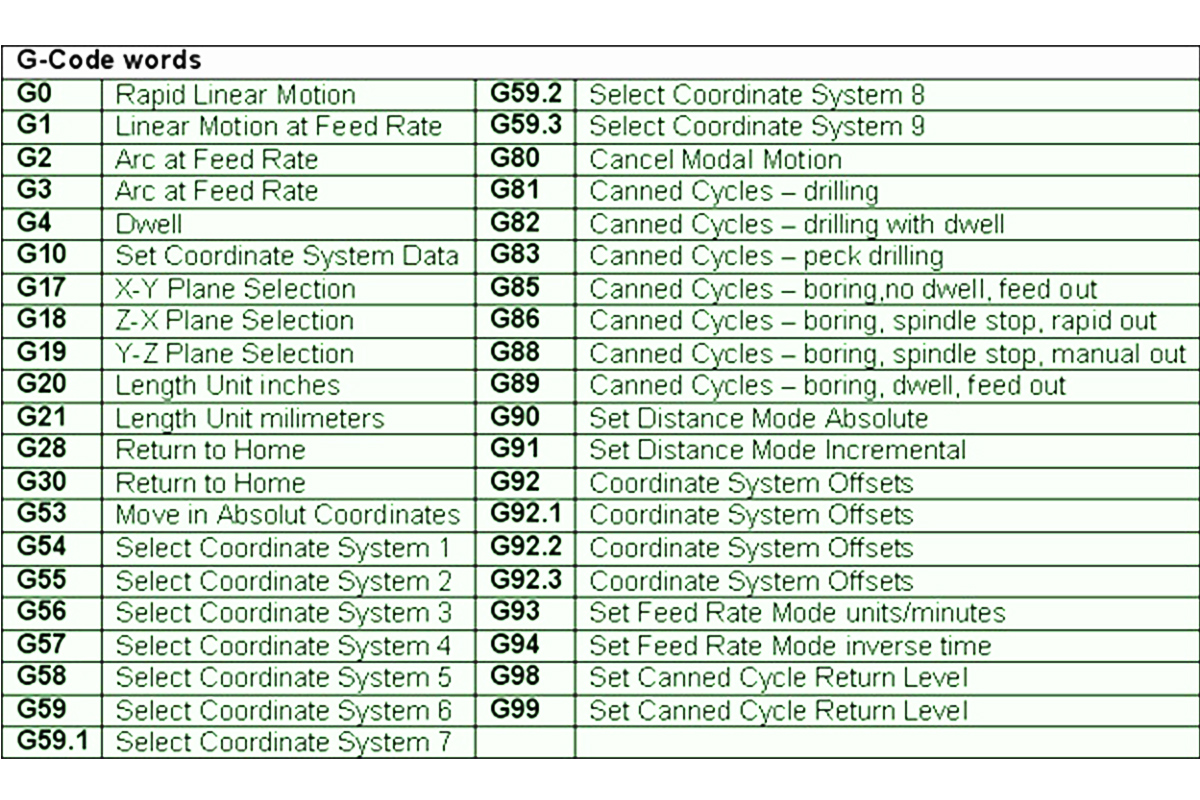 |Hardware:
|Hardware:
For the electronics, we needed to mill the FabNET board to use it with RS-485 usb connectors:
Fabnet is a multi-drop network, meaning that multiple modules (a.k.a. nodes) share a single set of communication wires. Signalling is differential based on the RS-485 specification. Each node is assigned a four-byte IP address which uniquely identifies it over the network.
Fabnet provides power at two voltages: high voltage (12V - 24V) is intended to drive motors, lamps and actuators, while low voltage (7.5V) supplies power to the logic circuits of the nodes.
Establishing connectivity between nodes and a computer, and providing proper power, requires several components: high and low voltage power supplies, a USB-RS485 converter cable, and an adaptor board (076-000A) with bias resistors.
The next images are some diagrams to understand how the FabNET connects to Gestalt boards and power supply.
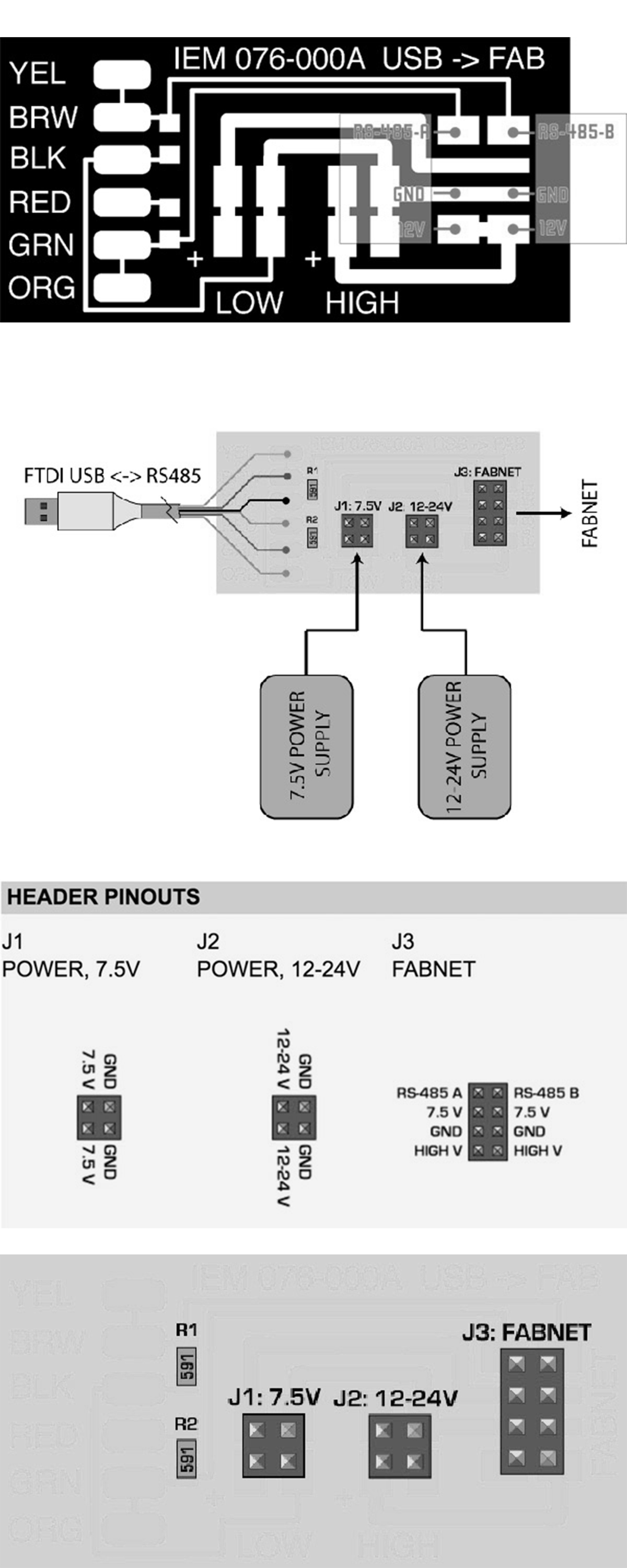
 video
video
Detailing was done in rhino3d using Openbuild blocks as blocks and reference.

converting 3d to 2d laser cut files; as it tends to be to fastest way to fabricate in the lab; also very durable with acrylic or mdf (however mdf is only suggested for prototypes as will wear and tear quickly)
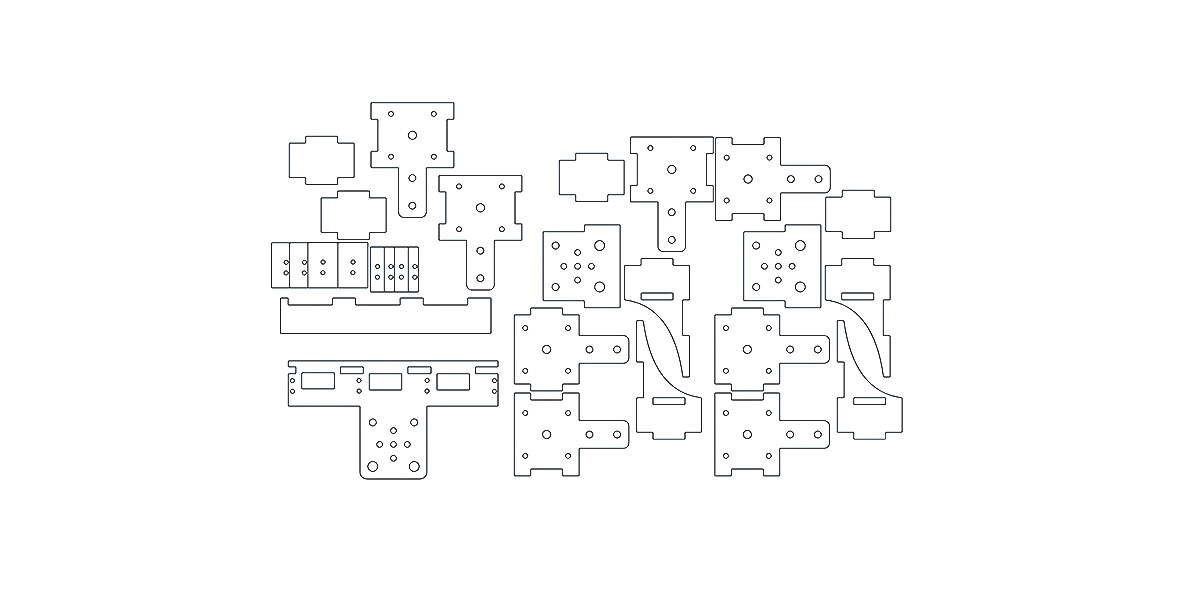
Make sure pressfit is tight and use some glue only where necessary; for additional strength.

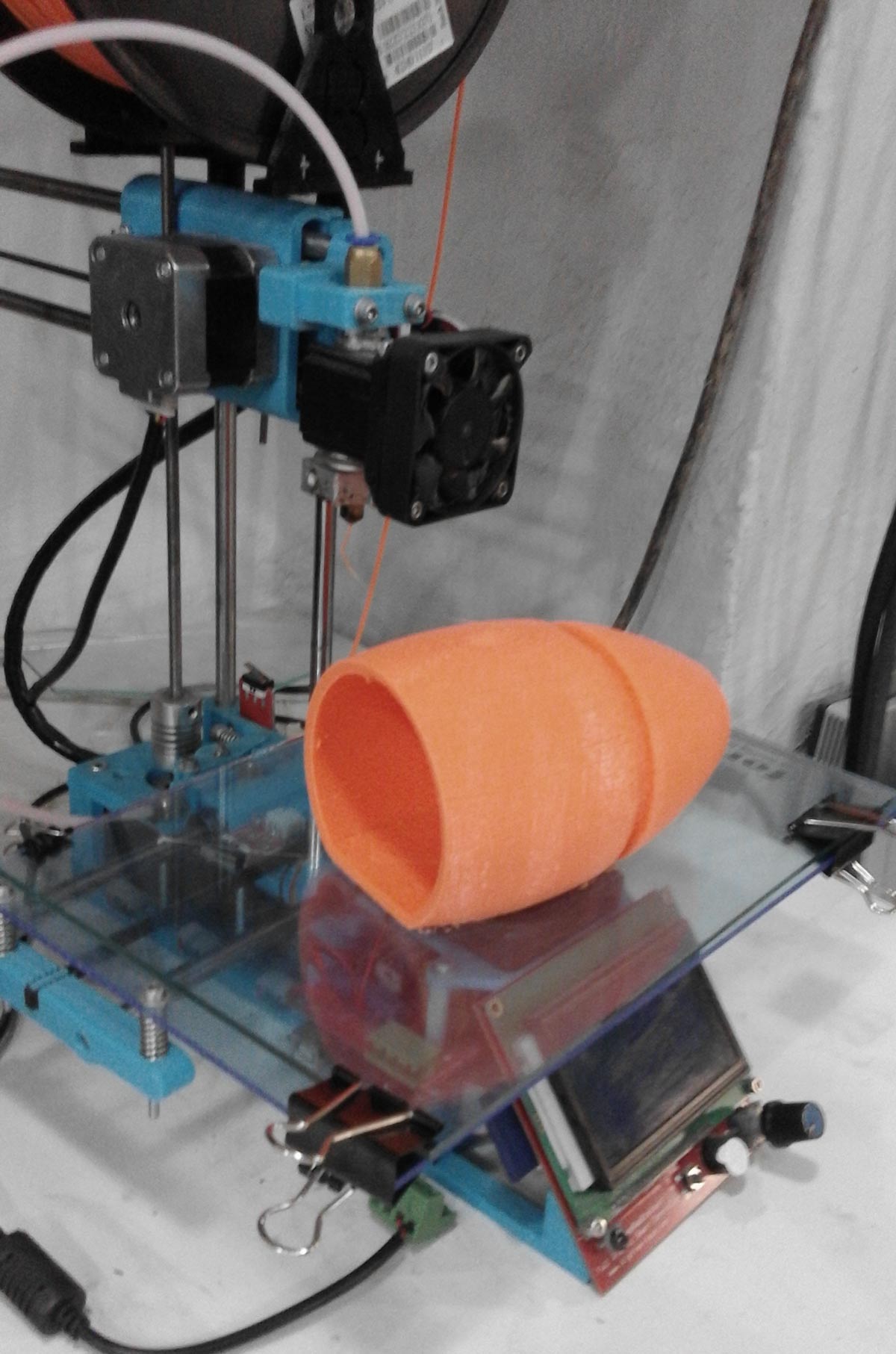
Assembling everything together considering all screws; washers and bolts as well as electronics and motors. Base was used to hide all electronics.
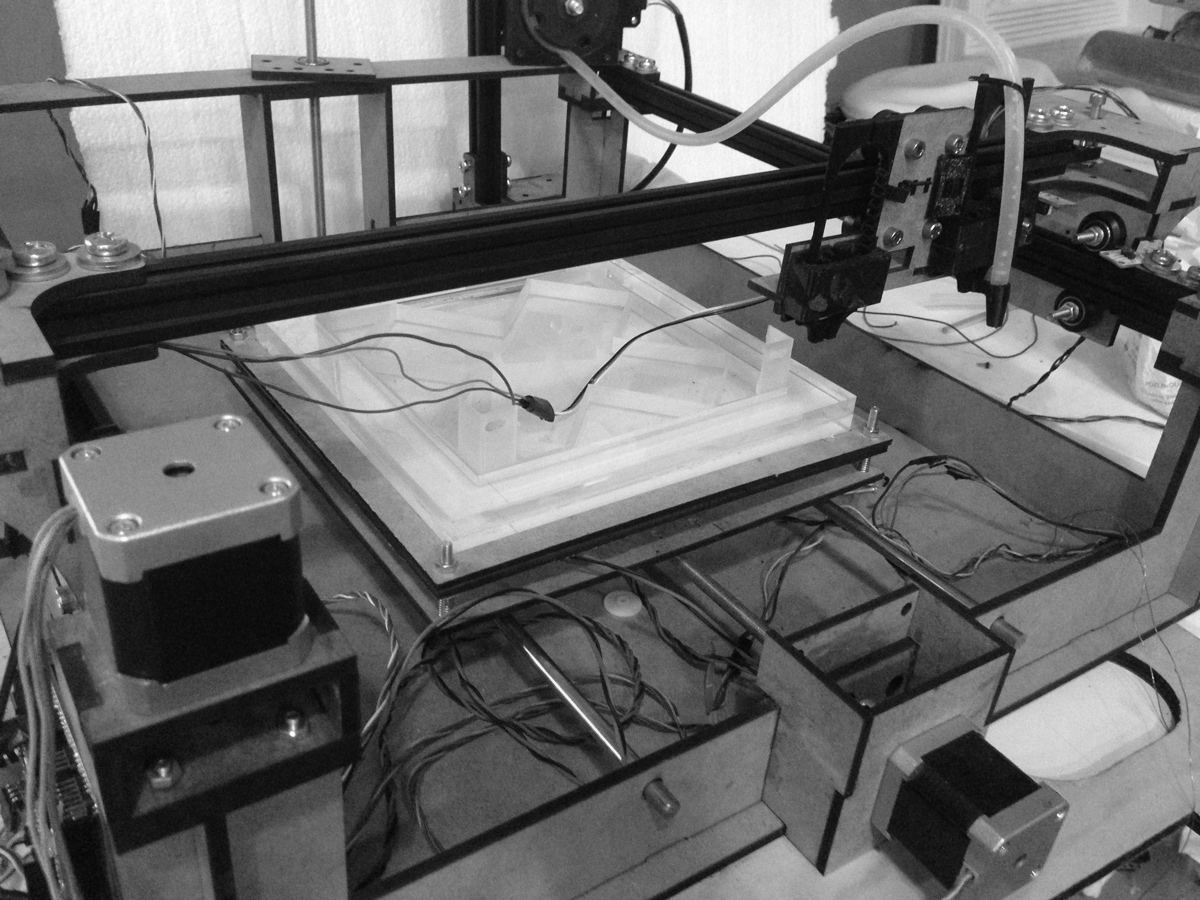
Bill of quantities:
Although everything adds up into such a pricel this machine was actually build from recycled parts taken from a reprap and items found in the lab. Therefore reducing the price and 'recycling'.
hydrobot by joegalea on Sketchfab
Servos are being used as a z axis to evetually acts as a possible valvue should the pump not be necessary for certain materials but also as a z movement for closer reach when filling the space.
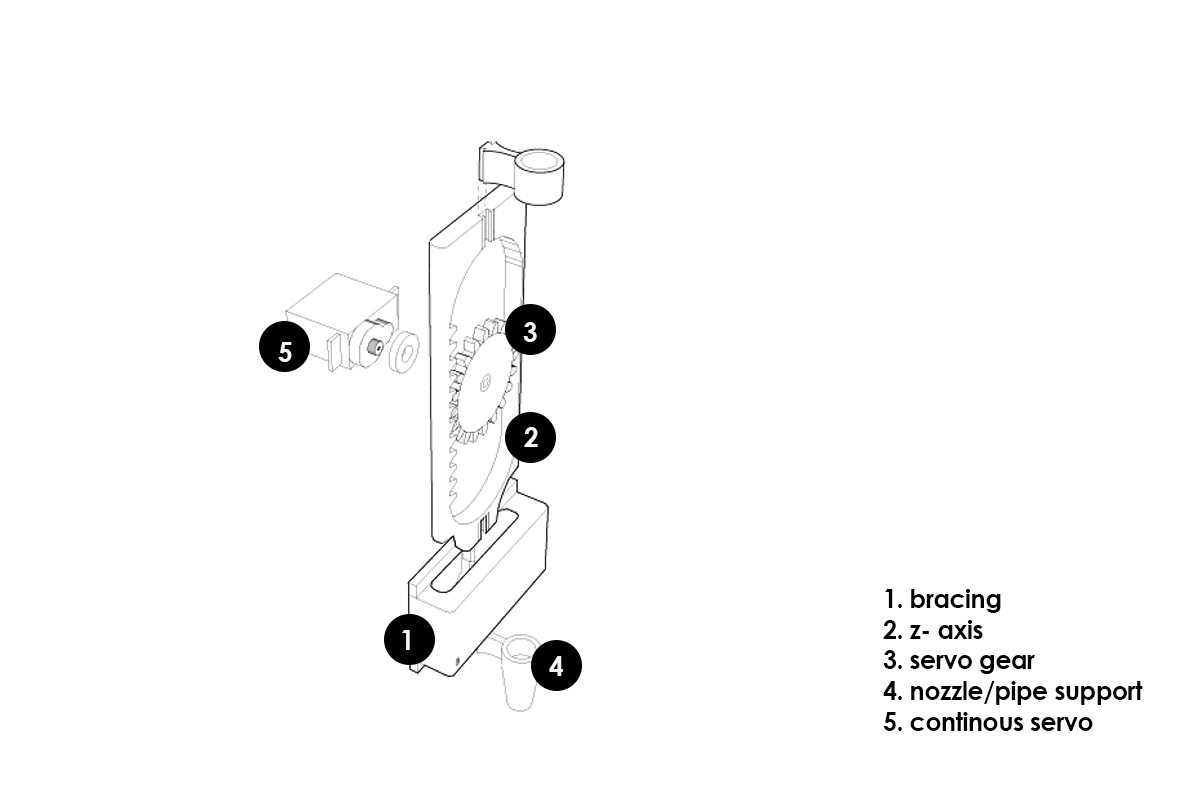
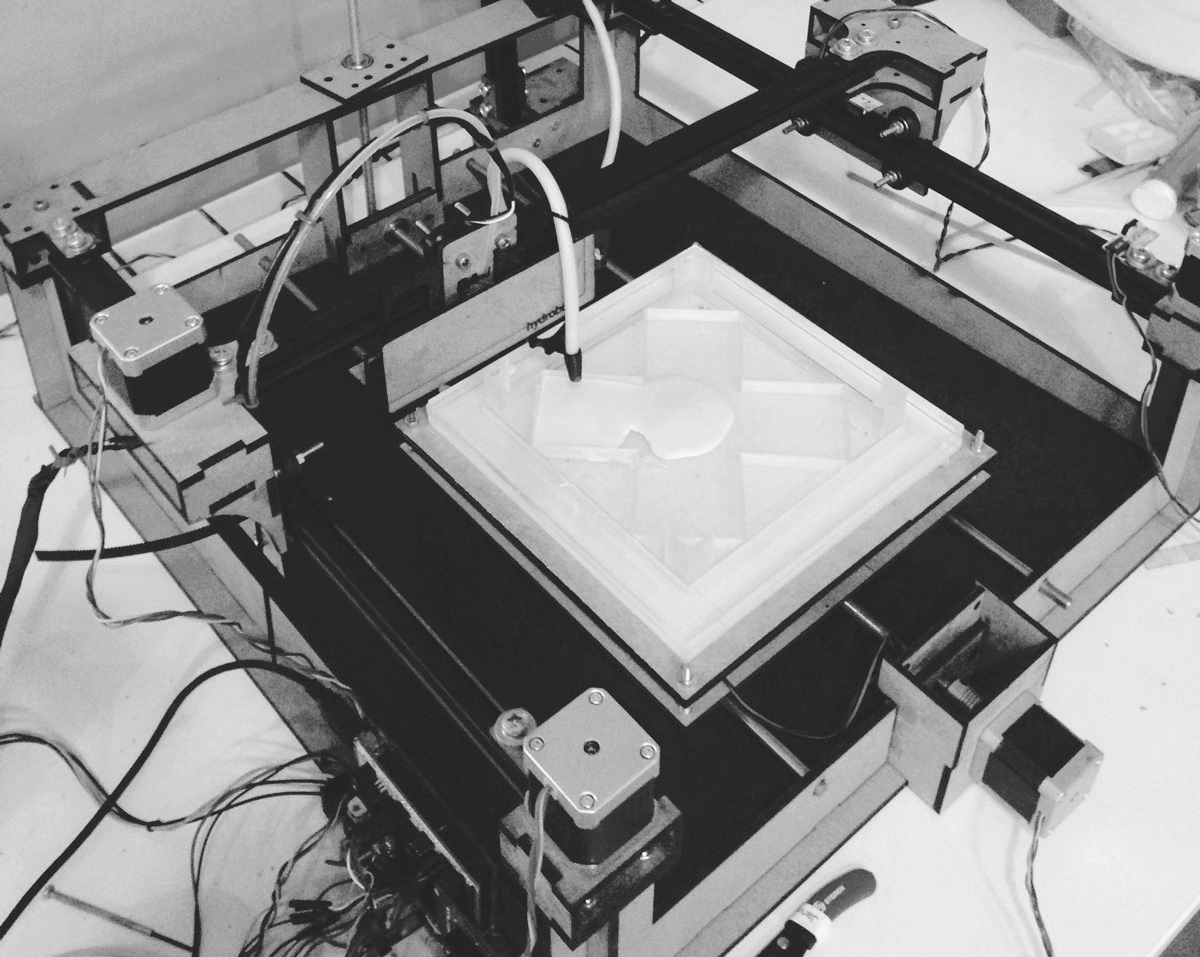
Below shows a grasshopper definition i wrote for a peristaltic pump. The pump squezes a silicone pipe and thus creates pressure which allows accurately controllable extrusion. A number of tests were made untill I had minimal friction and could get it to work properly. The process requires accurate fabrication, detailing and power.
 This was the very first version; which still required a lot more details to work.
This was the very first version; which still required a lot more details to work.
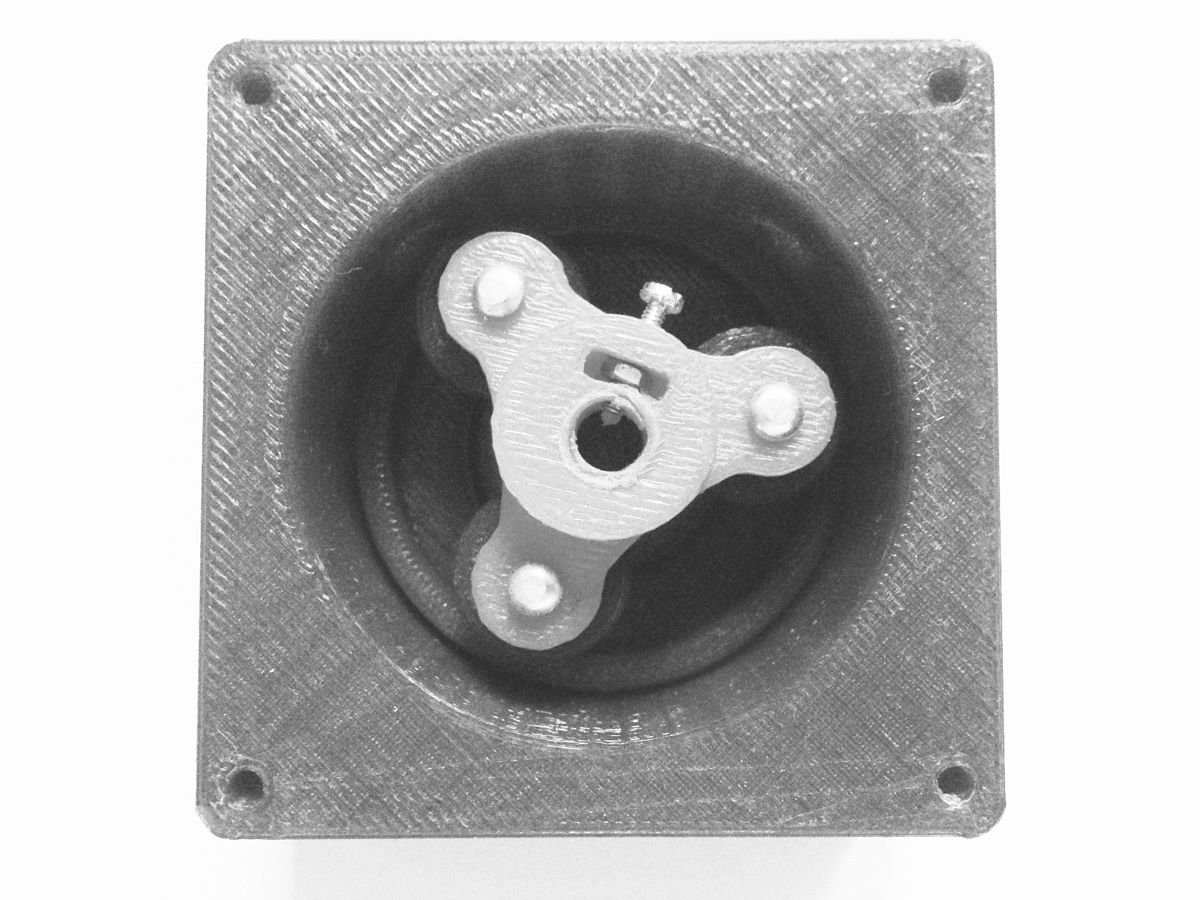
In this next version i decided to place prusa gears; to allow more power to the stepper motor by making it approximately 5 times slower in this case (47/9 ratio).

However because of the casing there was still a lot of friction and it was difficult to change things if i needed to. So I designed a next version..
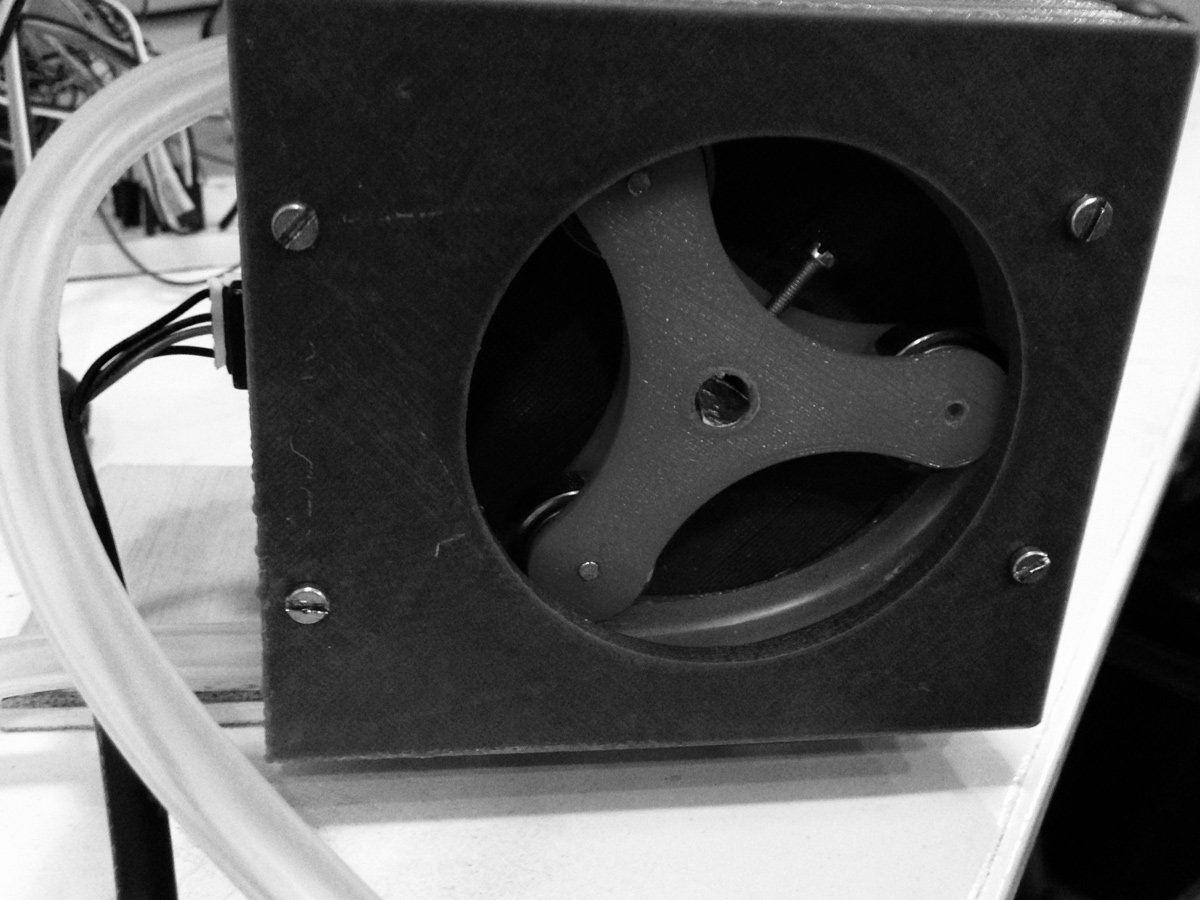
Version three was designed in a way to allow a lot of interchangeablity should something need arranging. I increased the number of ball bearings to squash the pipe but created less pipe squashing length. Occlusion (which refers to how much squeezing is happening to the tubes) could be adjusted by 3d printing one part and in fact this worked on the second try of approc .25 mm.
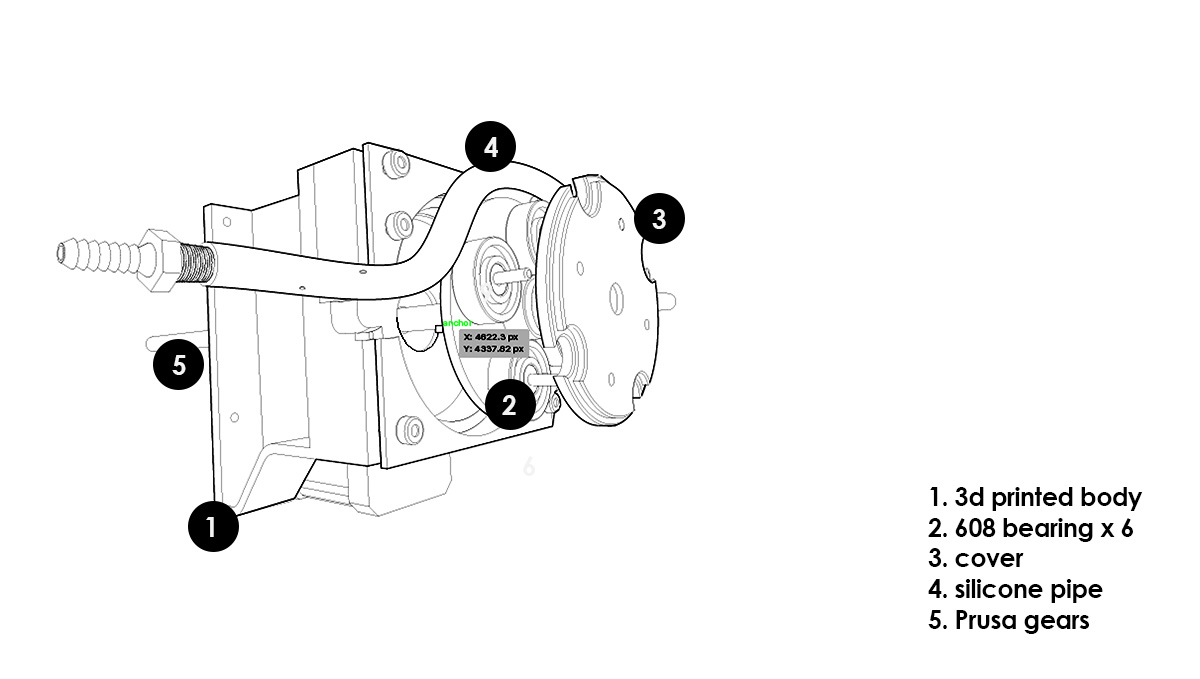
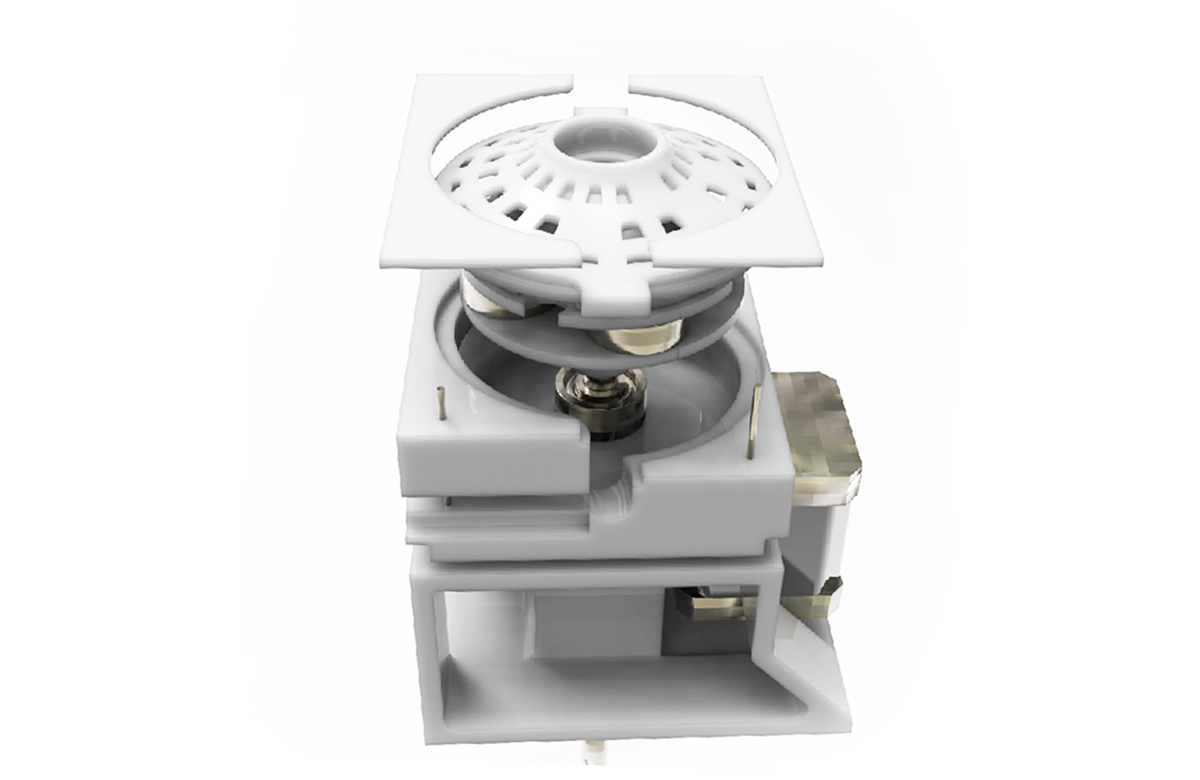
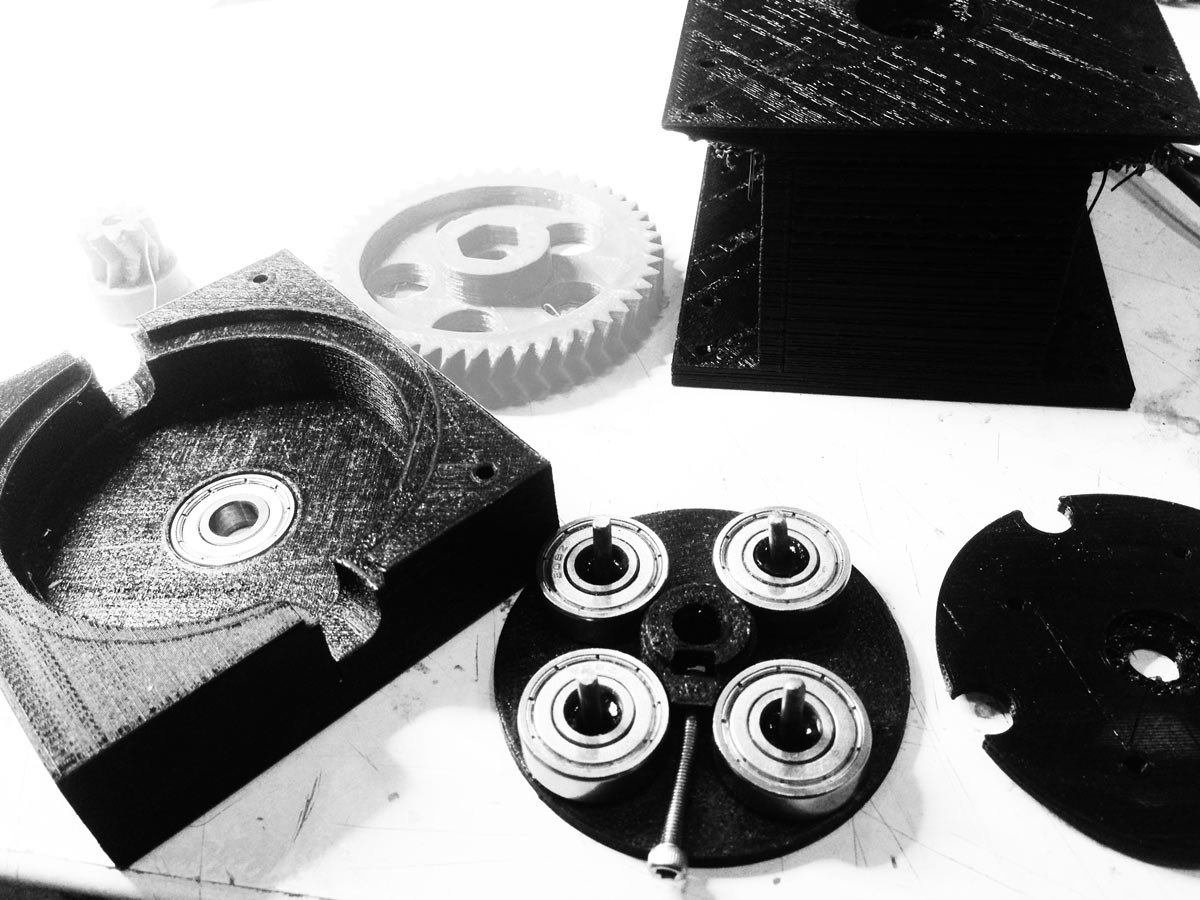
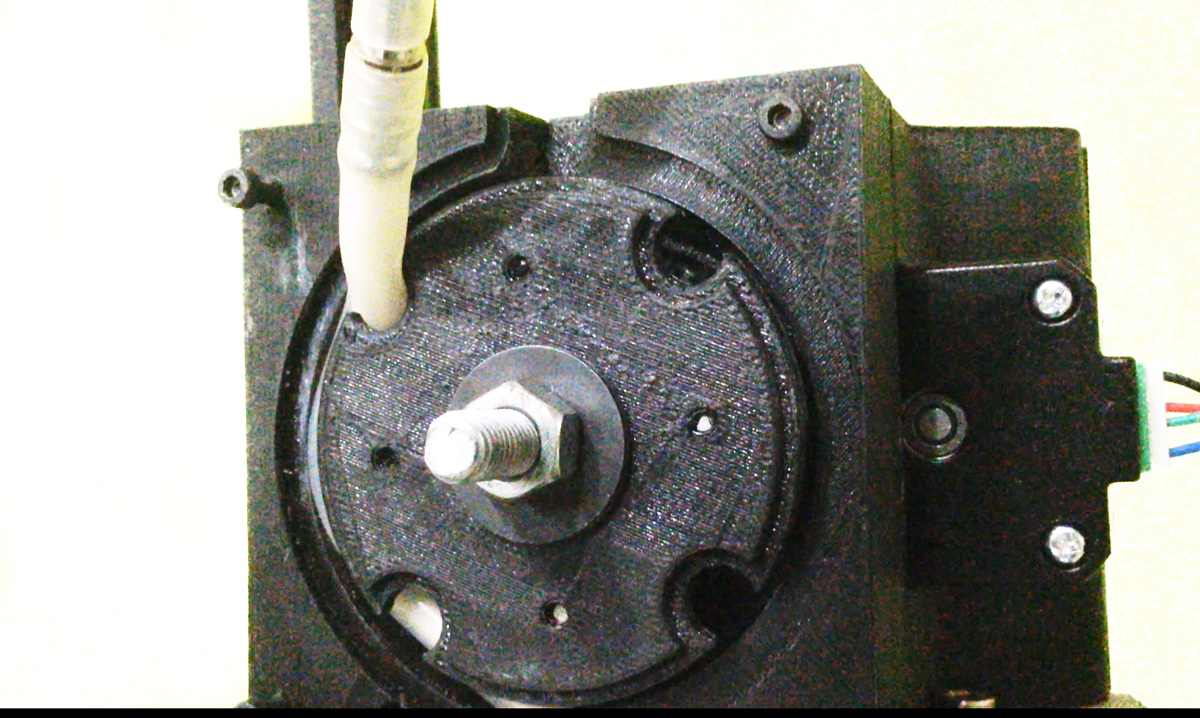
The video above shows one of the first tests showing extrusion; servo movement; and xy movement

In the final weeks i added a second extruder as shown above by slightly modifying the marlin code. Here is a video showing it being tested.

This work is licensed under a Creative Commons Attribution-NonCommercial-ShareAlike 4.0 International License.
|Download all files
|Brief MIT
|Lecture Neil Gershelfeld